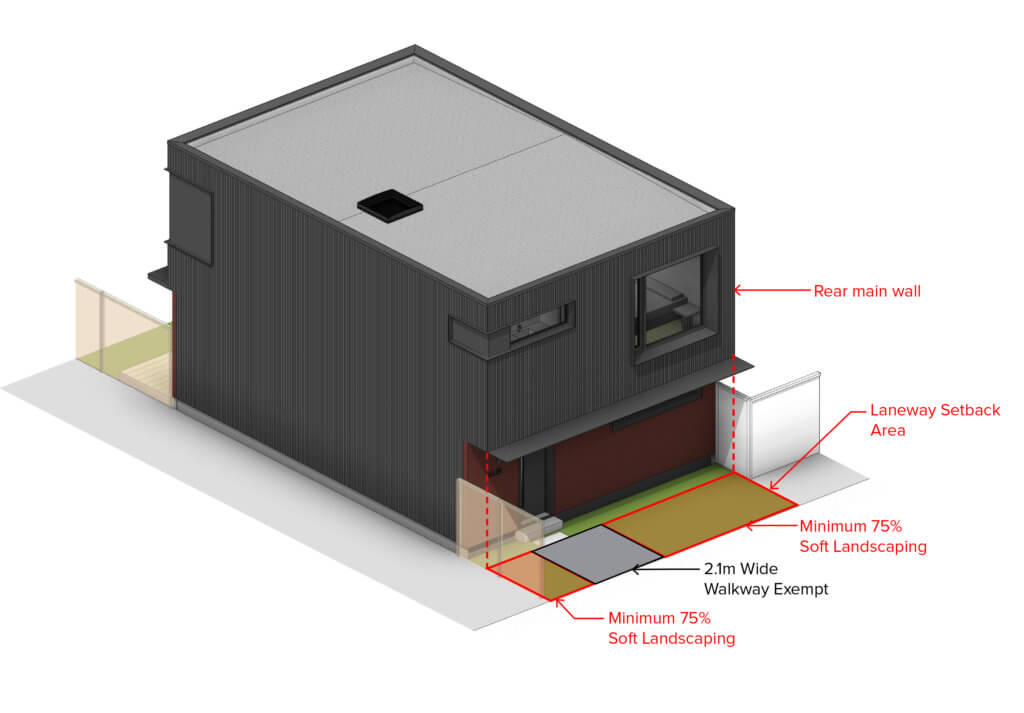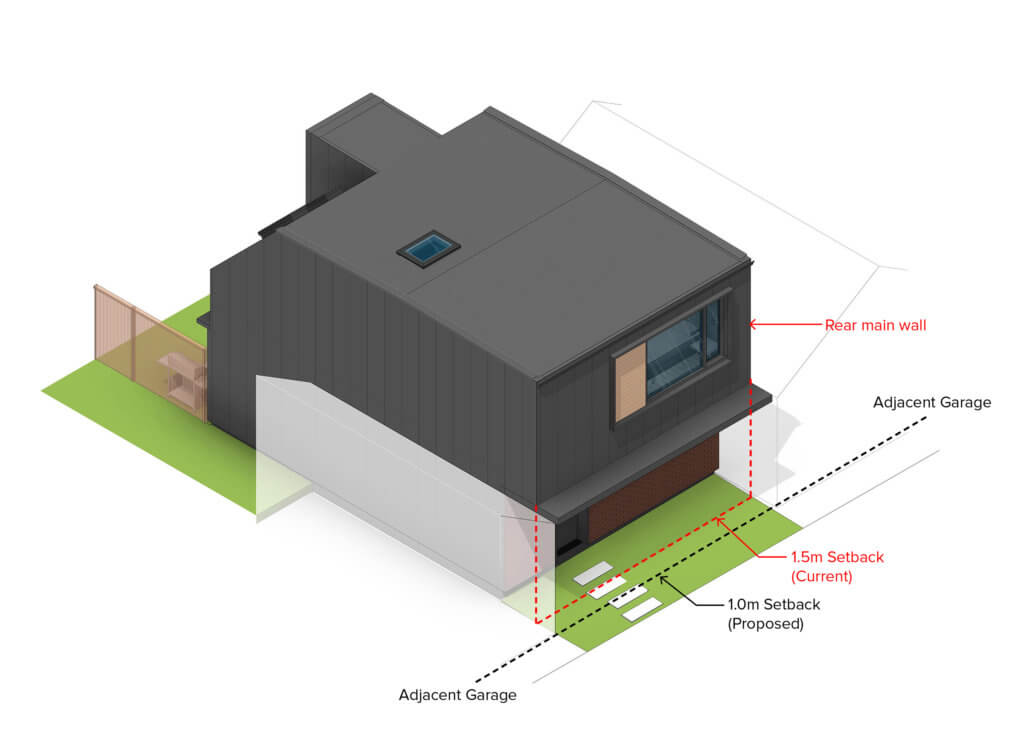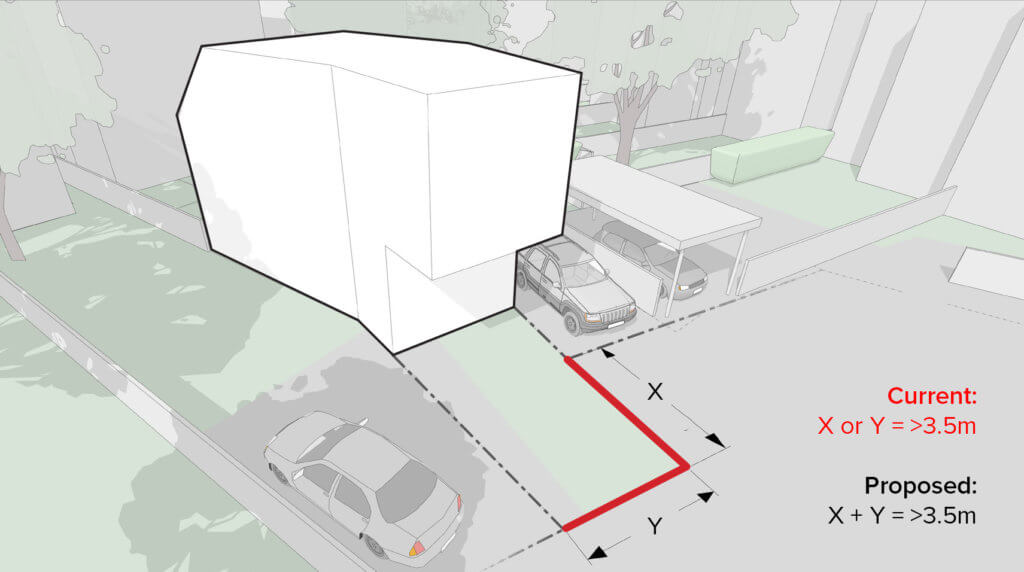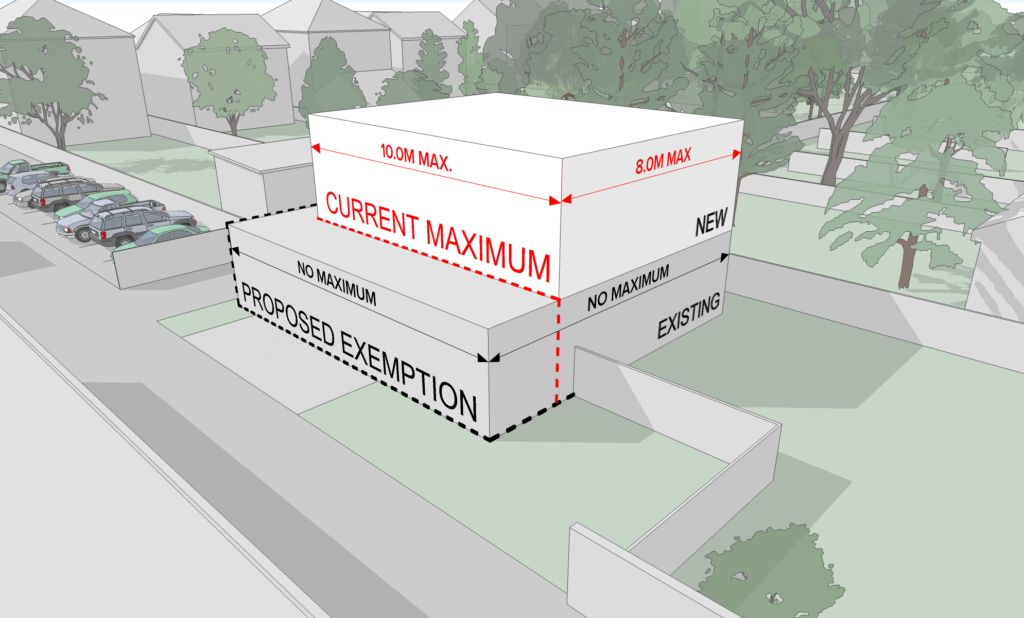When the Changing Lanes policy was enacted in 2018, City Council requested that Toronto Planning undergo a by-law monitoring program, reporting back following the first 200 permits issued or 2 years into implementation. The direction was to review the policy’s progress, evaluate, and make recommendations for refinement if necessary, in consultation with the community. We feel it’s a great initiative that allows lessons learned in implementation to inform an evolving framework.
On August 31st and September 1st, 2021, Toronto Planning hosted two information sessions presenting their findings from both an internal review and a report commissioned by Gladki and Associates Planning. On October 27th, City Planning presented a series of recommendations for by-law amendments based on their community consultation and recommendations put forth in the Gladki report.
Here, we summarize the notable recommendations that will be presented to the Planning and Housing Committee on November 25th, 2021.
SOFT LANDSCAPING
Current Requirements
The area between the laneway suite and the laneway (the laneway setback) must be a minimum of 75% soft landscaping, excluding a permitted driveway.
The area between the rear main wall of the main house and the front wall of the laneway suite (the rear yard) must be a minimum of 60% soft landscaping for lots with a frontage less than 6.0m. This is increased to a minimum of 85% on lots with a frontage greater than 6.0m.
The Recommendation
The soft landscaping requirements for both the laneway setback and the rear yard shall remain, however shall exempt a 2.1m wide paved walkway accessing the laneway suite.
Our Take
Soft landscaping refers to sod, mulch, soil or other organic permeable ground cover. Decks, gravel, pavement, interlock, concrete, and other impermeable surfaces are considered “hard” landscaping. Minimum soft landscaping requirements help to keep our backyards green, preserve our urban forest canopy, and assist in rain water management. The strict landscaping requirements for laneway suites are a key counterbalance to the high lot density and coverage that is now permitted with a laneway suite in place. However, the current requirement leaves homeowners often having to sacrifice a deck to maintain a safe and level access route across their yard (or vice versa). It should be noted that the 2.1m width corresponds with provisions outlined in municipal accessibility standards. This walkway exemption will allow for greater safety, accessibility, flexibility and variation in design solutions that are both functional and compliant.

LANEWAY SETBACK
Current Requirements
A laneway suite must be setback a minimum of 1.5m from a side or year lot line that abuts a laneway.
The Recommendation
The minimum setback from a lot line abutting a laneway shall be reduced to 1.0m.
Our Take
This is a very logical recommendation for two key reasons; the first and obvious one is that a reduced laneway setback would result in a slightly increased building footprint. This change may only result in an additional 20” in building length on each level, but this can be critical on lots with limited rear yard depth. On a 25’-0” lot, the laneway suite could gain up to 75 square feet, which can be appreciable where every square inch is precious.
Perhaps equally as important, the 1.0m setback aligns with the minimum setbacks required for other laneway facing ancillary structures (garages). This will allow for homeowners to easily convert or add atop their existing garages, avoiding complicated structure and envelope details to accomplish a stepped back addition. New construction could now be built directly atop a previously complying garage wall. This change will also create a consistent lanescape (pun intended), with equalized setbacks as laneways transition from spaces for parking to spaces for living.

LANEWAY FRONTAGE
Current Requirements
In order to qualify for a laneway suite, a side or rear lot line must abut a publicly designated laneway for a minimum of 3.5m.
The Recommendation
Rather than considering a single rear or side lot line for this 3.5m ‘frontage’, the abutment of a side and rear lot line can be combined to meet a minimum of 3.5m.
Our Take
We have long felt that this was an unfortunate semantic error in the current by-law. While not typical, many lots in the city that are situated at the terminus of a lane or are tapered to the rear have not benefited from a single lot line abutting the laneway for the minimum frontage, although they otherwise meet the by-law criteria perfectly (both in compliance and in principle). This amendment is a long overdue correction and an example of how a single 2 letter word can mean all the difference in rendering your lot eligible.

BUILDING HEIGHT
Current Requirements
A two-storey laneway suite must be no higher than 6.0m measured from average grade.
The Recommendation
This height restriction shall be increased to 6.3m, measured from average grade.
Our Take
We get it – its only 0.3m (12”), but this makes a huge difference in accommodating unique characteristics of certain lots. Where the elevation of average grade can be skewed by awkward topography, or where the ground floor assembly must be raised to prevent damage to the root structure of adjacent protected trees, this seemingly minor increase can allow for a suite to maintain reasonable ceiling heights on both storeys. This can also allow for increased floor and roof assembly thicknesses that would provide better thermal performance. We feel this is a sensitive approach to a sensitive subject. A modest increase allows for some design flexibility and better-quality buildings with little adverse impact to neighbouring properties. A little will go a long way.
ROOFTOP EQUIPMENT
Current Requirements
Equipment necessary for the functional operation of a building (condensing units, solar panels, access hatches and alike), may protrude beyond the building height restriction by a maximum of 1.0m, so long as they are set back a minimum of 1.0m from the roof perimeter.
The Recommendation
This permitted protrusion shall be increased to a maximum 1.5m, alongside an increased setback from the roof perimeter of 1.5m.
Our Take
This may first appear as a trivial item, however in our experience designing and building laneway suites, it is often very difficult to locate an outdoor condensing unit (which is a vital part of your heating and cooling system) on a roof within a 1.0m height restriction, considering the size of many efficient units and the requirement for a snow stand (which is not only best practice, but critical to maintaining your unit’s warranty). This has led homeowners to locate these units in the rear yard or laneway setback, which tend to occupy very precious hard landscaping area (see landscaping). This is a great example of how lessons learned in execution can inform a successfully evolving policy.
BUILDING WIDTH MEASUREMENT
Current Requirements
The building width must be measured perpendicular to the centerline of the lot.
The Recommendation
Delete this standard. Our understanding is that building width would be measured from one main side wall to an opposing main side wall. Note, there is no proposed change to the maximum building width currently prescribed (8.0m).
Our Take
Similar to the laneway ‘frontage’ item, this alteration is intended to accommodate uniquely shaped lots that do not necessarily conform to the typical laneway condition. Here, a tapered or L-shaped lot may benefit from greater flexibility in how the width measurement would be applied.
ADDITIONAL TECHNICAL CHANGES
Order of Construction
The City’s by-law currently requires that main buildings be constructed prior to ancillary buildings. This was written into the over-arching policy to ensure traditional ancillary structures (garages, sheds etc.) would be secondary to a primary dwelling and would only be constructed after the fact. With laneway suites now introduced as a type of ancillary structure this antiquated requirement shall no longer apply. This would effectively allow homeowners whom are constructing a new home and laneway suite to do so simultaneously, allowing for greater efficiencies in construction.
Exempting Existing Building Dimensions
Currently, a lawfully existing structure (ie. your current garage) can be maintained and constructed upon even if it does not satisfy the minimum required setbacks and separations stipulated in the by-law. Any new construction (ie. a second storey addition or extension), must satisfy these setbacks and separations.
However, if this existing structure is larger than the maximum permitted footprint for a laneway suite (8.0m in width by 10.0 in length), you would need to seek a minor variance at Committee of Adjustment in order to maintain it as a whole. City planning is now proposing that an existing structure can be maintained even if it exceeds the maximum permitted building footprint.

CONCLUSION
Overall, these changes promise to make our changing lanes program better. The ultimate goal is to enable average homeowners to easily create housing flexibility and unique rental options while maintaining the character of low rise residential neighbourhoods. The recommendations made are small, yet critical steps forward in a living and growing initiative.
Toronto Planning will be presenting their findings and recommendations to the Planning and Housing Committee of November 25th. More information including the Gladki report and city presentations can be found here. The likelihood and timing of these changes being enacted hinges on the response from the committee and Council. Stay tuned to our social media and newsletter for ongoing updates. See you in a laneway (or at a Committee meeting) soon!
